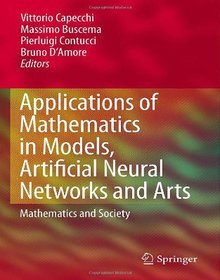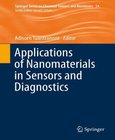Applications of Mathematics in Models, Artificial Neural Networks and Arts
Mathematics and Society

Book Details:
| Publisher: | Springer |
| Series: | Springer |
| Author: | Vittorio Capecchi |
| Edition: | 1 |
| ISBN-10: | 9048185807 |
| ISBN-13: | 9789048185801 |
| Pages: | 617 |
| Published: | Aug 19 2010 |
| Posted: | Mar 22 2015 |
| Language: | English |
| Book format: | |
| Book size: | 18.52 MB |
Book Description:
The book shows a very original organization addressing in a non traditional way, but with a systematic approach, to who has an interest in using mathematics in the social sciences. The book is divided in four parts: (a) a historical part, written by Vittorio Capecchi which helps us understand the changes in the relationship between mathematics and sociology by analyzing the mathematical models of Paul F. Lazarsfeld, the model of simulation and artificial societies, models of artificial neural network and considering all the changes in scientific paradigms considered; (b) a part coordinated by Pier Luigi Contucci on mathematical models that consider the relationship between the mathematical models that come from physics and linguistics to arrive at the study of society and those which are born within sociology and economics; (c) a part coordinated by Massimo Buscema analyzing models of artificial neural networks; (d) a part coordinated by Bruno DAmore which considers the relationship between mathematics and art. The title of the book "Mathematics and Society" was chosen because the mathematical applications exposed in the book allow you to address two major issues: (a) the general theme of technological innovation and quality of life (among the essays are on display mathematical applications to the problems of combating pollution and crime, applications to mathematical problems of immigration, mathematical applications to the problems of medical diagnosis, etc.) (b) the general theme of technical innovation and creativity, for example the art and mathematics section which connects to the theme of creative cities. The book is very original because it is not addressed only to those who are passionate about mathematical applications in social science but also to those who, in different societies, are: (a) involved in technological innovation to improve the quality of life; (b) involved in the wider distribution of technological innovation in different areas of creativity (as in the project "Creative Cities Network" of UNESCO).
Download Link:
Related Books:
Artificial Neural Networks
In Real-Life Applications
Artificial Neural Networks in Real-Life Applications offers an outlook on the most recent works in the field of artificial neural networks (ANN). It includes theoretical developments of the ANN area and applications of these systems, using intelligent characteristics for adaptability, automatic learning, classification, prediction and even artistic creation....
Computational Intelligence
Synergies of Fuzzy Logic, Neural Networks and Evolutionary Computing
Computational Intelligence: Synergies of Fuzzy Logic, Neural Networks and Evolutionary Computing presents an introduction to some of the cutting edge technological paradigms under the umbrella of computational intelligence. Computational intelligence schemes are investigated with the development of a suitable framework for fuzzy logic, neural networks and evolutionary computing, neurofuzzy systems, evolutionaryfuzzy systems and evolutionary neural systems. Applications to linear and nonlinear systems are discussed with examples. Key features: Covers all the aspects of fuzzy, neural and evolutionary approaches with worked out examples, MATLAB exercises and applications in each chapter Presents the synergies of technologies of computational inte...
Applications of Nanomaterials in Sensors and Diagnostics
Recent progress in the synthesis of nanomaterials and our fundamental understanding of their properties has led to significant advances in nanomaterial-based gas, chemical and biological sensors. Leading experts around the world highlight the latest findings on a wide range of nanomaterials including nanoparticles, quantum dots, carbon nanotubes, molecularly imprinted nanostructures or plastibodies, nanometals, DNA-based structures, smart nanomaterials, nanoprobes, magnetic nanomaterials, organic molecules like phthalocyanines and porphyrins, and the most amazing novel nanomaterial, called graphene. Various sensing techniques such as nanoscaled electrochemical detection, functional nanomaterial-amplified optical assays, colorimetry, fluorescence and ...
2007 - 2021 © eBooks-IT.org



